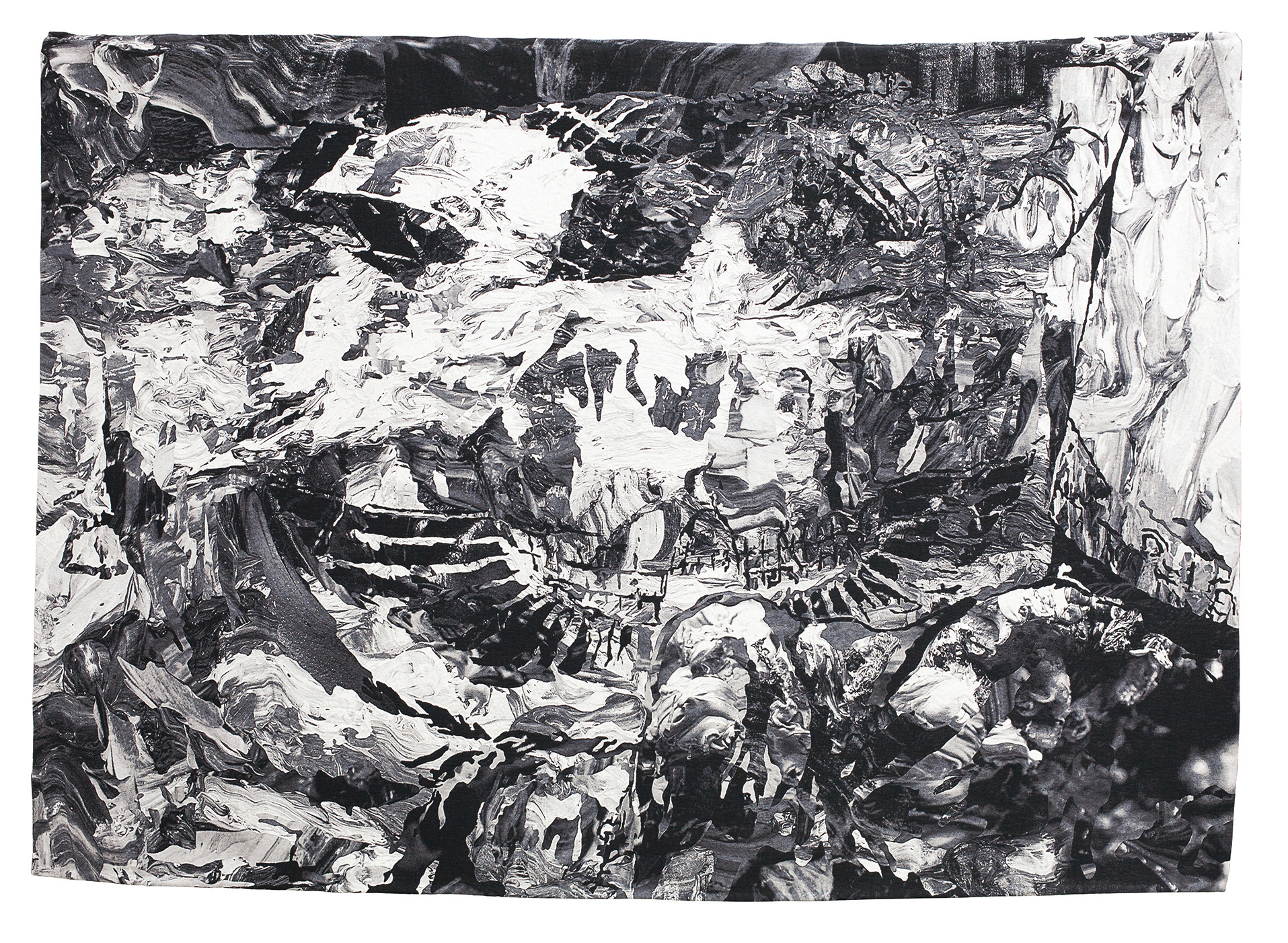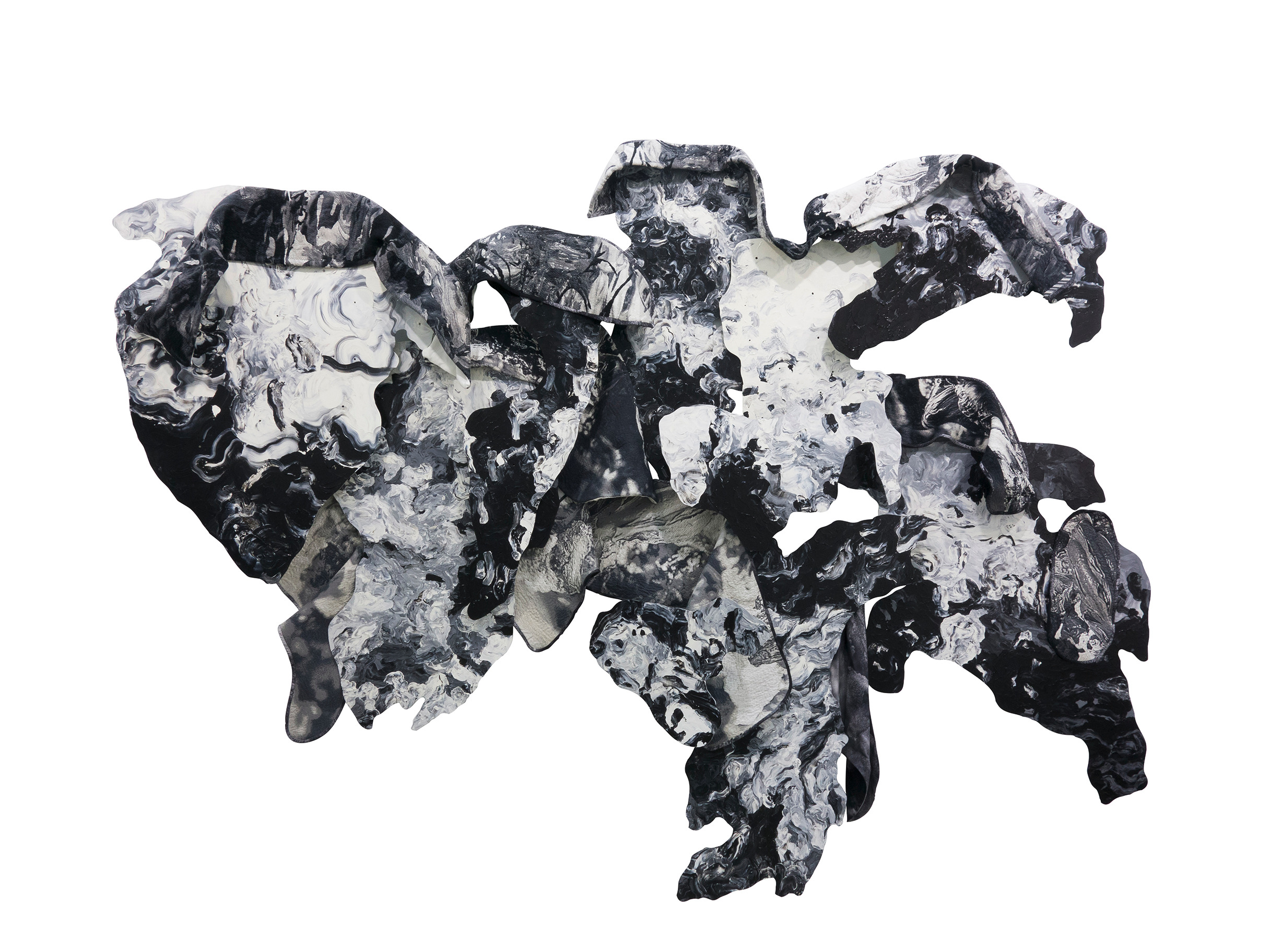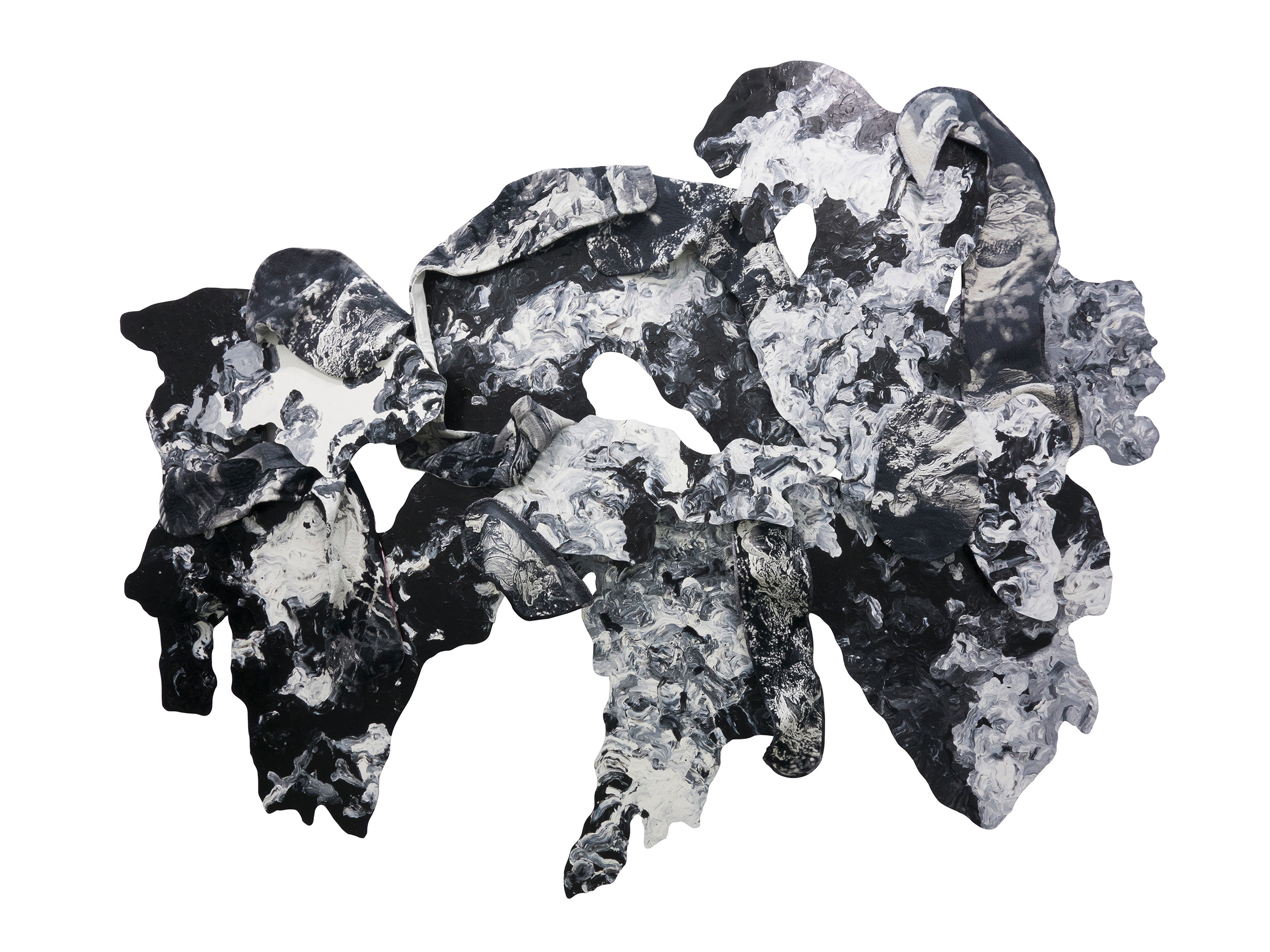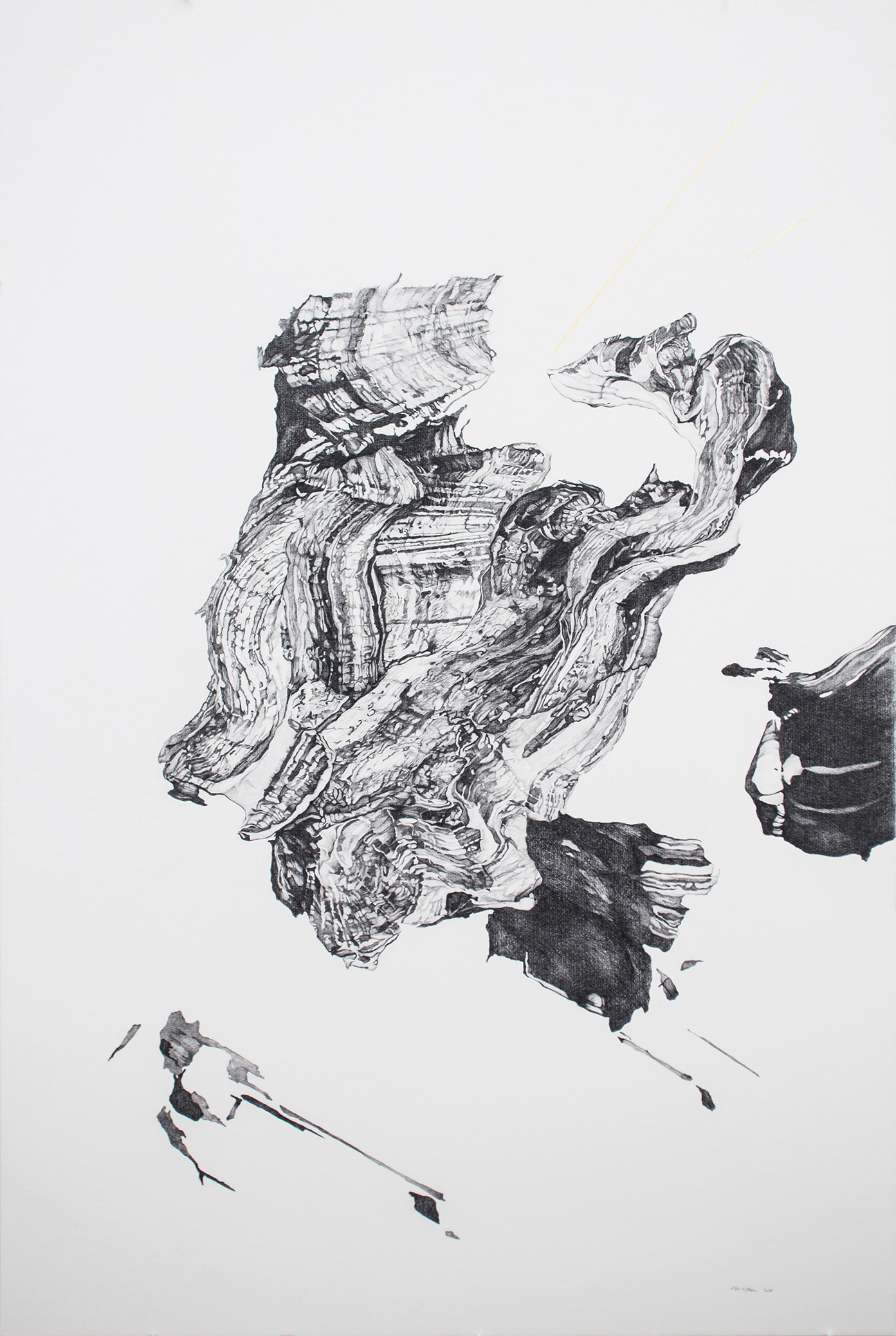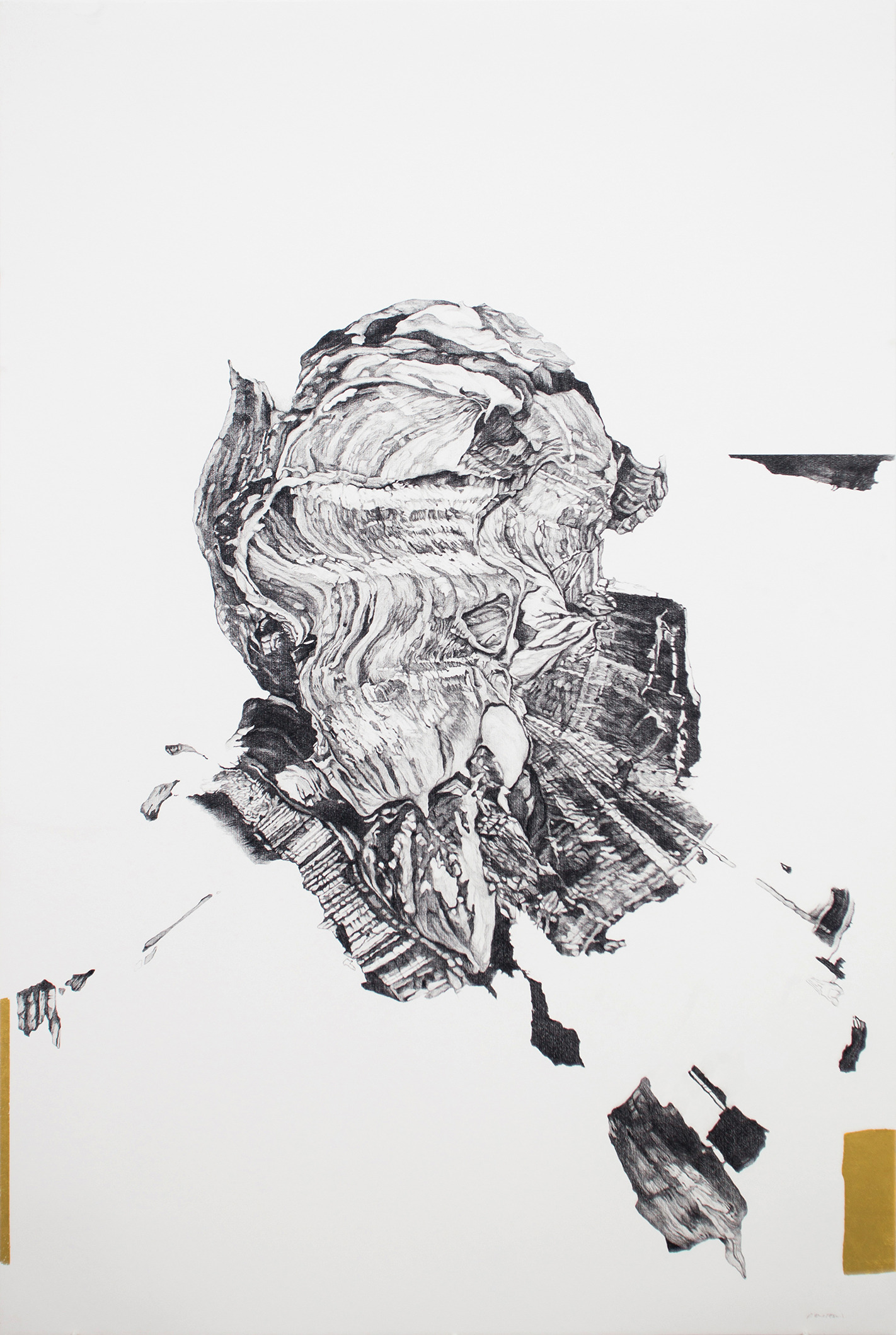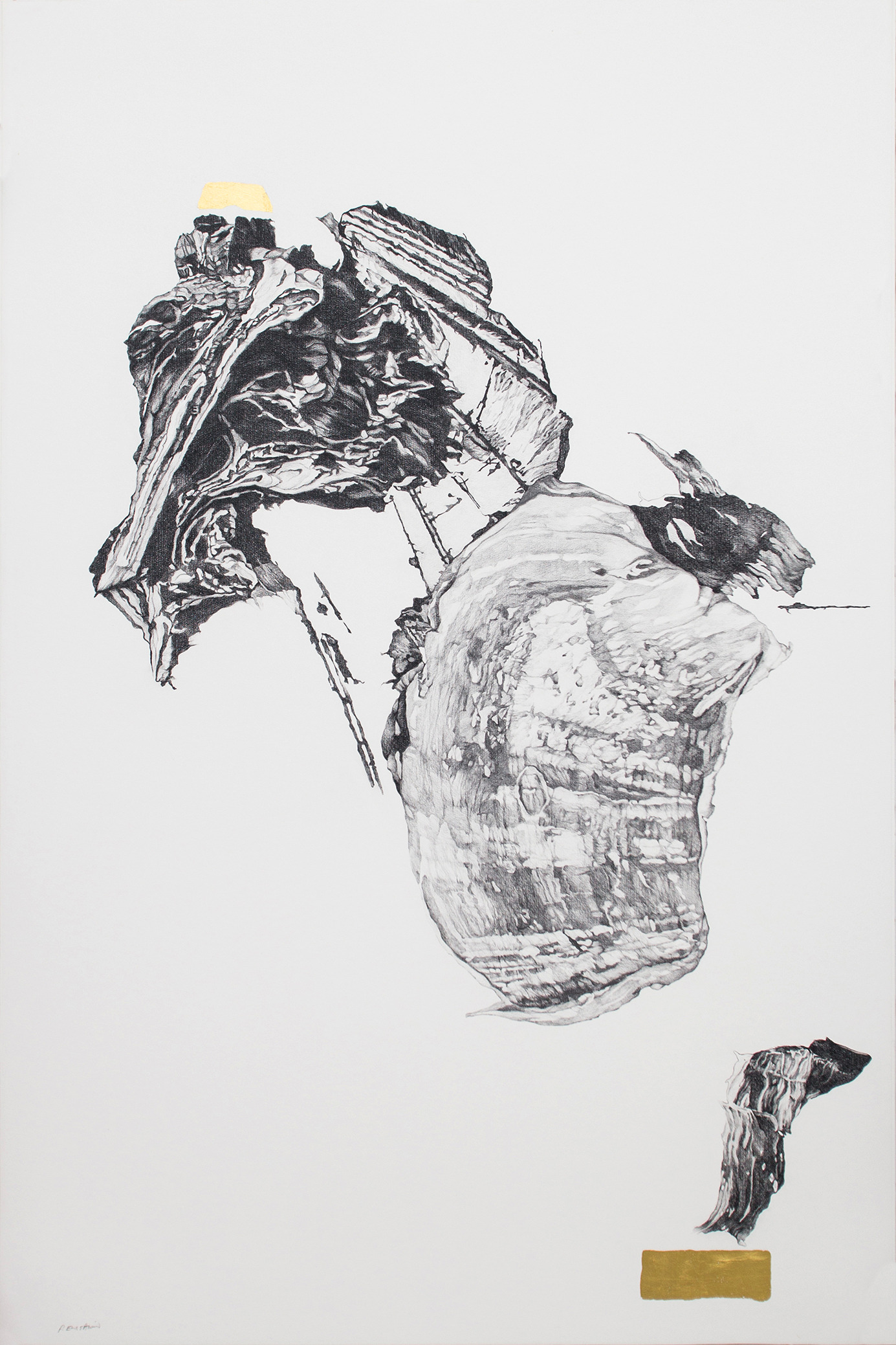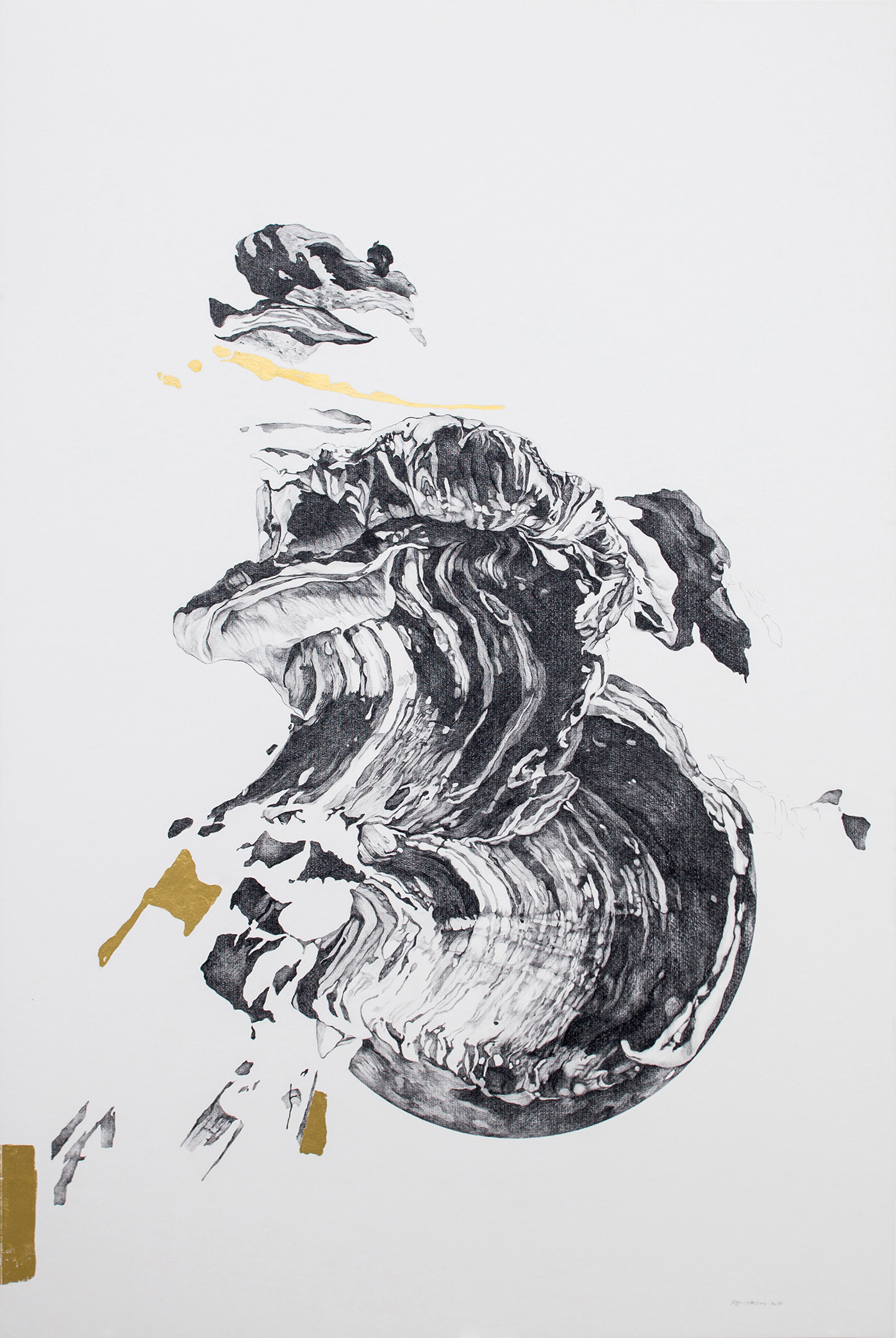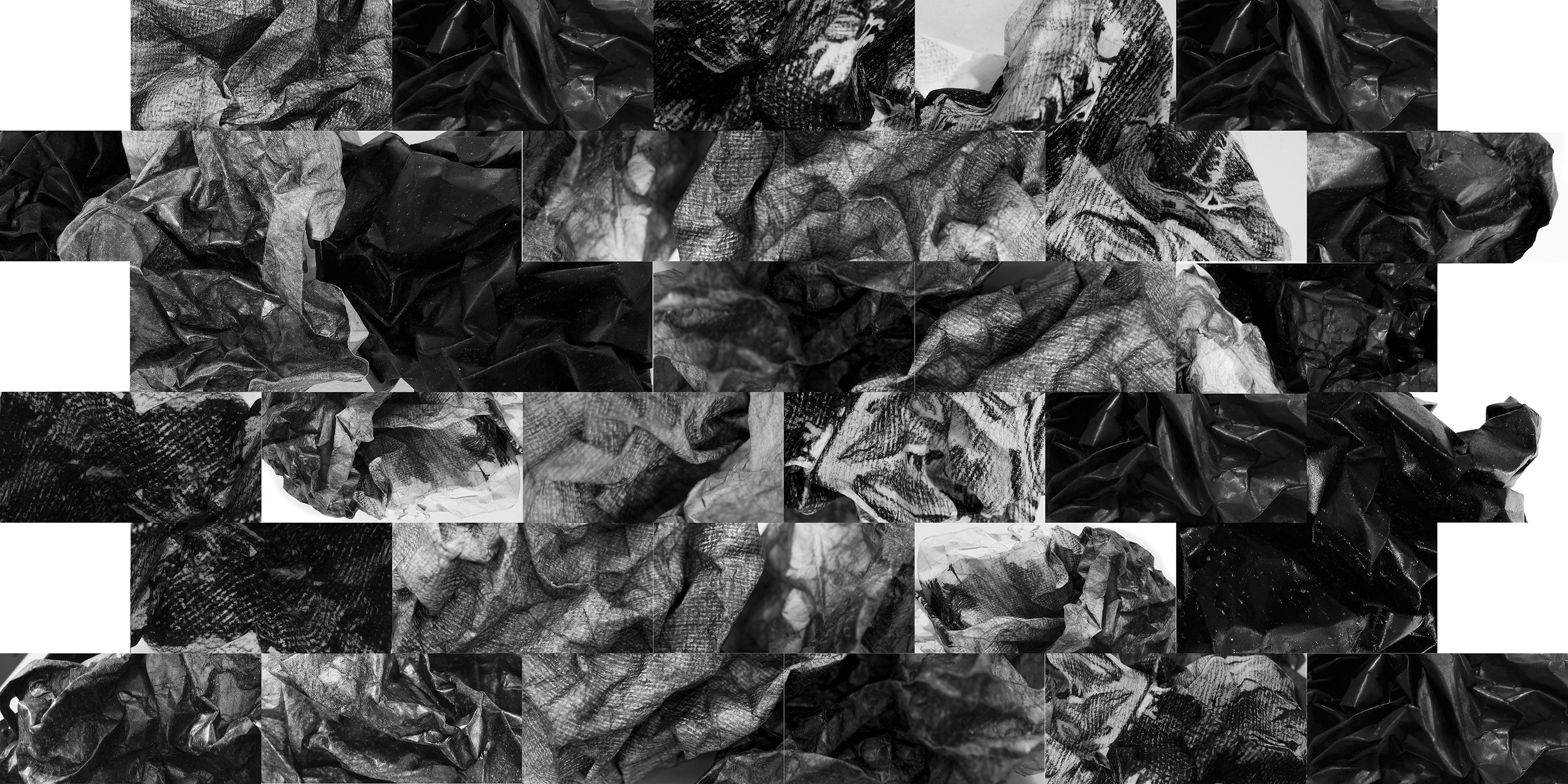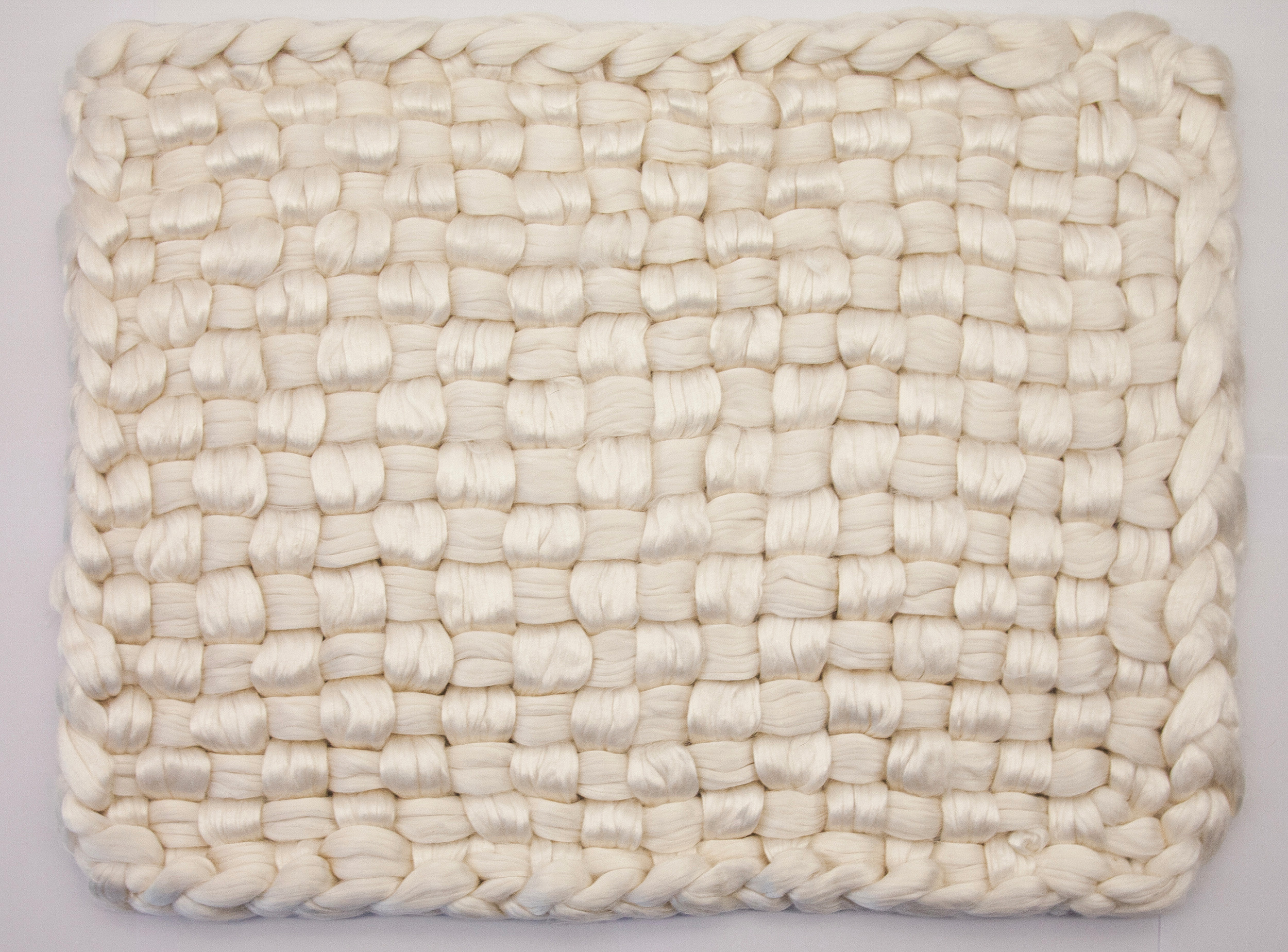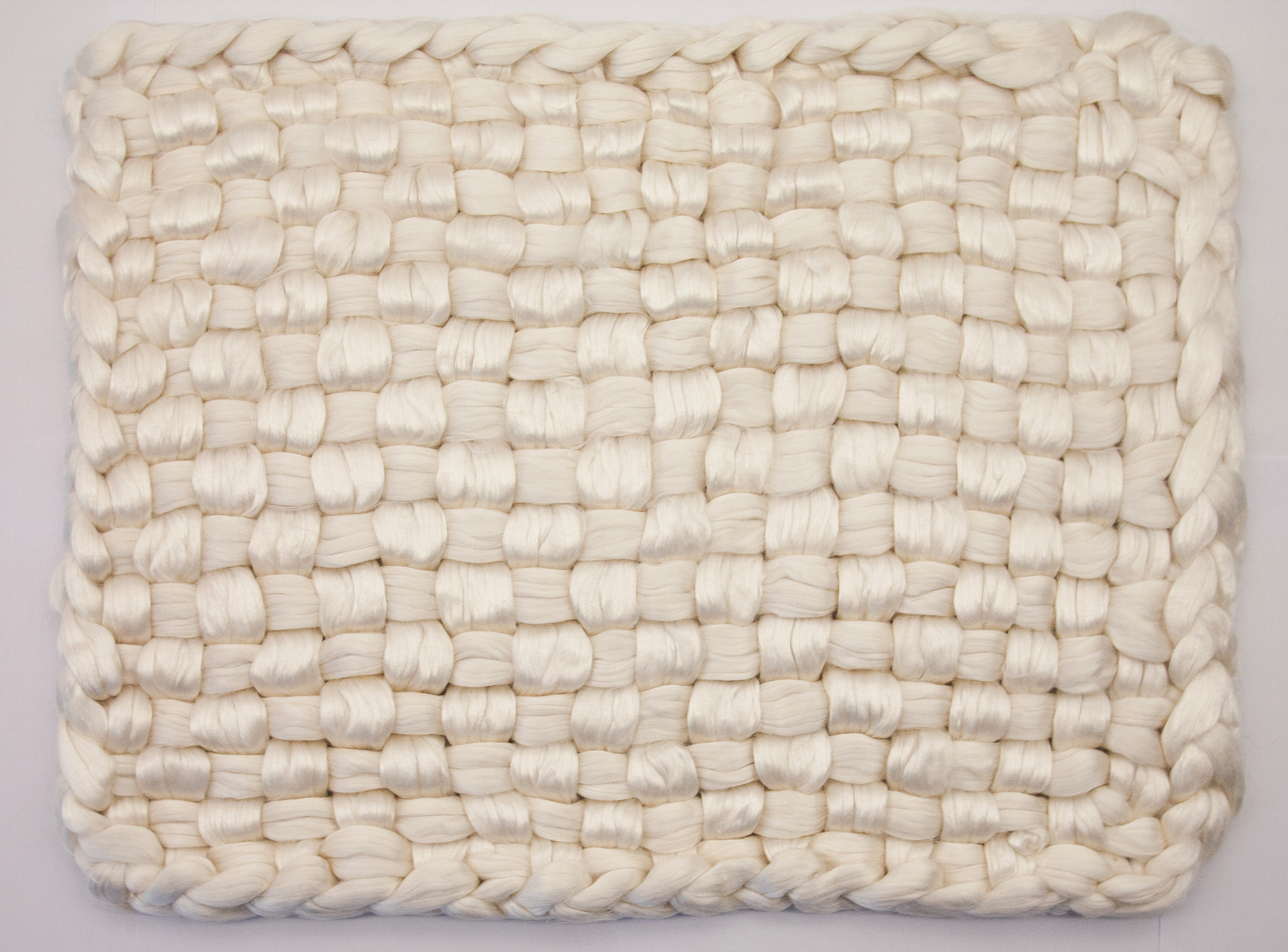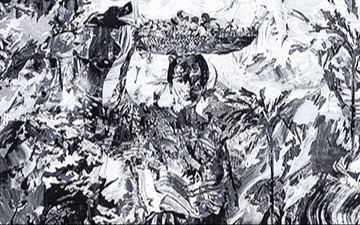
West Bund Art and Design
Patricia Perez Eustaquio
Booth N105, West Bund Art Centre, Shanghai
Installation Views
About
Modes of Difference
In this solo presentation by Silverlens at West Bund Art and Design 2018, visual artist Patricia Perez Eustaquio surveys into the conflicts that emerge in the act of translation and object-making. A painter with a sculptor’s sensibilities, Eustaquio has, over time, explored dichotomies through the creation of material forms ranging from glass, rattan, fabric, metal to even resin as vehicles for questioning perceptions.
The act of translation is never a straightforward path: it is a making and an unmaking that resists the original by speaking through its own language. The new works shows a tapestry that progresses from an earlier work contemplating a Cleopatra (or Death of Cleopatra) painting by revolutionary patriot Juan Luna in 1881. The tapestry draws on Eustaquio’s years of in-depth study and experiments on textiles. In stark shades of black and white, it spans the length of a wall while its narrow width seems to be compressing a vague central image suggesting truncation, of being a fragment from a whole and a whole in itself.
Transition and negotiation of choice continue in a series of thick hand-cut aluminum sheets in amorphous shapes, mimicking forms found on the same tapestry. On its aluminum surface are enlarged recreations of photographed blobs of oil paint found in the artist’s studio but done in acrylic mixed with a gel that thickens the application of the translucent paint with texture. There is a play on perceptions of scale and focus heightened by Eustaquio’s practice of manipulating materials, through cutting and shaping to give patterns. The paint blobs also serve as a basis to a collection of large paper works in graphite. Rendered in matte black pencil, the oil paint loses their hierarchy and glossy viscosity, to turn into what could be the minute details of a chiseled landscape, or a close look at metamorphic rock. Eustaquio based these works on cropped digital photos, where she extends what is known of an image by continuing to draw past its margins to reach what is unknown, thus, changing its representation completely. What a translation loses, it can also gain in equal measure. Eustaquio uses these strategies of perception and pattern not to suppress, but to also reveal differences without attempting to reify it directly.
On the floor are a group of ceramic tiles that could easily be overlooked for its decorative beauty, but upon careful scrutiny, shows digitally printed details of crumpled paper darkened by pencil shadings. Some are as black as soot and others done with a lighter hand. Discards are a common sight in an artist’s studio. Early on in her art practice, Eustaquio has been known to use these lost, unloved things and combine them with folk and craft technique. Here, the distinctions between notions of ornamentation and fine art are made ambiguous, if not contentious. Perhaps, the act of making releases objects from the constraints of form, to allow the possibilities for another future. This line of thought continues in a delicate foot rug woven from spun white silk and a mirror flanked by a split and sanded wooden figure of a man with its hands outstretched. The foot rug is made with prized pure silk, changing its material existence from lowly and marginal to something of value; worthy of touch and admiration. On the other hand, in olden times, a mirror was an expensive novelty thought to reveal the inner truth and used as a tool for self-knowing. In this piece, the mirror is a counterpoint to the cleaving of a figure, intervening how it is perceived. At first glance, these works seem disparate from the rest of the show but changing perception is also a method of translation. Parts of a whole need not be alike one another to have something to say, in fact, it is their differences that contribute to a greater language of meaning.
Words by Josephine V. Roque
Patricia Perez Eustaquio was born in 1977 in Cebu in the Philippines. She is one of the leading artists of her generation. In the past year, exhibitions included the Mind Set Art Center in Taipei and the Art Fair Philippines. A recipient of The Cultural Center of the Philippines’ Thirteen Artists Awards, she also gained recognition through several residencies abroad, including Art Omi in New York and Stichting Id11 of the Netherlands. Notable local and international shows include The Vexed Contemporary in Museum of Contemporary Art and Design, Manila; Volta Basel in Basel, Switzerland; and Credit Suisse’s Chimera in Singapore Art Museum, Singapore. She has exhibited at the Palais de Tokyo in Paris and was part of the 2016 Singapore Biennale. Patricia lives and works in Manila.
Josephine V. Roque is a freelance writer based in Manila. She earned her MFA in creative writing at De La Salle University and won the Purita Kalaw-Ledesma Prize for art criticism in 2017. She writes reviews and profiles for ArtAsiaPacific Magazine.
Works
